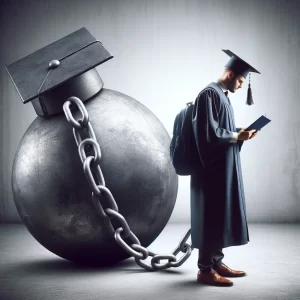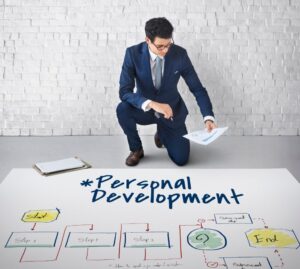
For many young adults, there is a stigma for those who return to their childhood home after they have left. Previous generations often viewed this as a sign of weakness, poor financial management, or failure to adjust to the responsibilities of adulthood. However, this generation of “Boomerang Kids” seems to be changing how people view this phenomenon. Not only is it becoming more common, but it also offers several financial and lifestyle benefits for all parties involved.
8 Factors Fueling the Trend of Boomerang Kids
In recent years, the phenomenon of “Boomerang Kids” — adult children who return to live with their Baby Boomer parents — has become increasingly prevalent. This trend is reshaping family dynamics and challenging traditional notions of independence. Let’s delve into eight key factors contributing to this growing trend.
1. Economic Challenges

The modern economy, marked by fluctuating job markets and soaring living costs, is a primary driver behind adult children moving back home. Despite what older generations think, “kids” really do have it harder these days. Research from Consumer Affairs reveals the stark contrast between the cost of living now versus when Baby Boomers were the same age.
Today, GenZ and Millenial adults have 86% less purchasing power than their Boomer parents. Furthermore, the rising costs of living and the fact that wages have not kept pace with inflation compound the issue. Sadly, these are only a few figures that highlight the economic hurdles faced by the younger generation.
2. Rising Housing Costs

With the real estate market skyrocketing, many young adults also find homeownership or renting in desirable areas out of reach. In many regions, the price of homes has increased at a rate that far exceeds wage growth. Not only does this make it difficult to save enough for a down payment, but it has made it nearly impossible for those with debt to enter the housing market.
Similarly, rental costs have also seen significant increases. With greater demands, an influx of vacation rental units, a focus on high-end housing development, and strict zoning laws, affordable housing is quickly disappearing. All of these factors have contributed to rising housing costs and created more financial barriers to independent living.
3. Student Loan Debt

Student loan debt is another reason why many Boomerang Kids return home. The burden of student loans is heavier than ever, with many graduates carrying significant debt. Since the 1970s, the cost of public education has increased by 310% and private education by 245%. In the last decade alone, student loan debt has risen by 66%, now totaling over $1.77 trillion. Although age, gender, location, and area of study determine each person’s debt, the average borrower currently owes $38,290 in student loans.
Starting their adult life with this amount of debt severely limits their financial flexibility. Not only does this financial burden impact their credit score, but it also influences career choices and consumes a significant portion of their income. This creates a domino effect that inhibits their ability to accumulate wealth or afford their own home.
4. Delayed Milestones

As a result of these burdens, young adults are reaching traditional milestones like marriage and parenthood later in life. Having these financial constraints makes it difficult to save for the same milestones that Baby Boomers were able to achieve at a younger age.
When a large percentage of Millenials and GenZ are struggling to support their lifestyles, it’s overwhelming to imagine the costs of homeownership, marriage, and parenthood. This has led to a disparity in age and a delayed timeline of when people reach the life events that traditionally happen in adulthood. While some Baby Boomers may feel this is due to poor planning, the figures show that it has more to do with changing economic conditions.
5. Employment Volatility

Compared to previous generations, young adults today are entering an economy with different realities. The job market’s instability, accentuated by contract and freelance work, has made steady employment a challenge for many. Not only has it been more difficult to obtain full-time employment, but also to find part-time work and jobs that utilize their skills and education.
In addition to less job security, there are also fewer employment benefits such as pensions and healthcare. These uncertainties and lack of assistance make it extremely challenging to plan for the future or commit to large financial decisions, such as buying a home. Therefore, many Boomerang Kids choose to move in with their parents in the hopes of gaining some financial ground.
6. Social and Cultural Shifts

The fact that more adult children move back home also reflects changes in societal norms and attitudes that have made it more socially acceptable. Although Americans have always placed a high value on personal autonomy, multigenerational homes have been the standard in many cultures around the world. Now that there has been greater visibility of this phenomenon through social media, it is helping to normalize this experience.
Additionally, people from all generations are seeing the other benefits of having their adult children in the same household. While many young adults do this to alleviate their financial responsibilities, it also helps their parents through shared expenses and assistance, property maintenance, and preservation of retirement funds. Furthermore, many adults believe it has improved their relationships and helped strengthen their familial bonds.
7. Personal Development

Another reason why many young adults return home is for greater personal development. Some view this period as an opportunity for personal growth, savings, or further education. Without the financial pressure of home ownership, young adults can focus more time on educational and career development.
While this may delay entry into the workforce, it can also lead to better job opportunities and financial independence. It also allows more time for career exploration, strategic job searching, mentorship, networking, and entrepreneurial ventures. Having parental assistance in the early stages of adulthood can serve as a stepping stone to a more secure financial future.
8. Health and Family Care

With an aging Baby Boomer population, some adult children return home to provide care and support. Economic considerations may be a factor. However, health, well-being, and family dynamics also influence this decision.
Sharing financial responsibility provides more options for parents on a fixed income as well as fewer expenses for their children who care for them. Furthermore, it offers more support through major life transitions when people are the most vulnerable. This makes it much easier for older adults as they lose their independence while simultaneously helping their children adapt to their roles as future caregivers.
Coming Around to Changing Family Dynamics

As “Boomerang Kids” become a defining feature of the 21st-century familial landscape, understanding the multifaceted reasons behind this trend is crucial. There is a complex interplay of economic, social, and personal factors fueling this trend. However, it seems the prevalence of the phenomenon is normalizing the experience and helping to remove the stigma.
Are you or someone you know navigating the boomerang kid dynamic? We would love to hear your story and learn how you are adapting to these changing times.
Read More
- The Financial Costs of Allowing Adult Children To Move Back Home
- Workforce Aging: 15 Ways Baby Boomers May Be Impacting the Career Prospects of Younger Generations
Come back to what you love! Dollardig.com is the most reliable cash-back site on the web. Just sign up, click, shop, and get full cashback!



